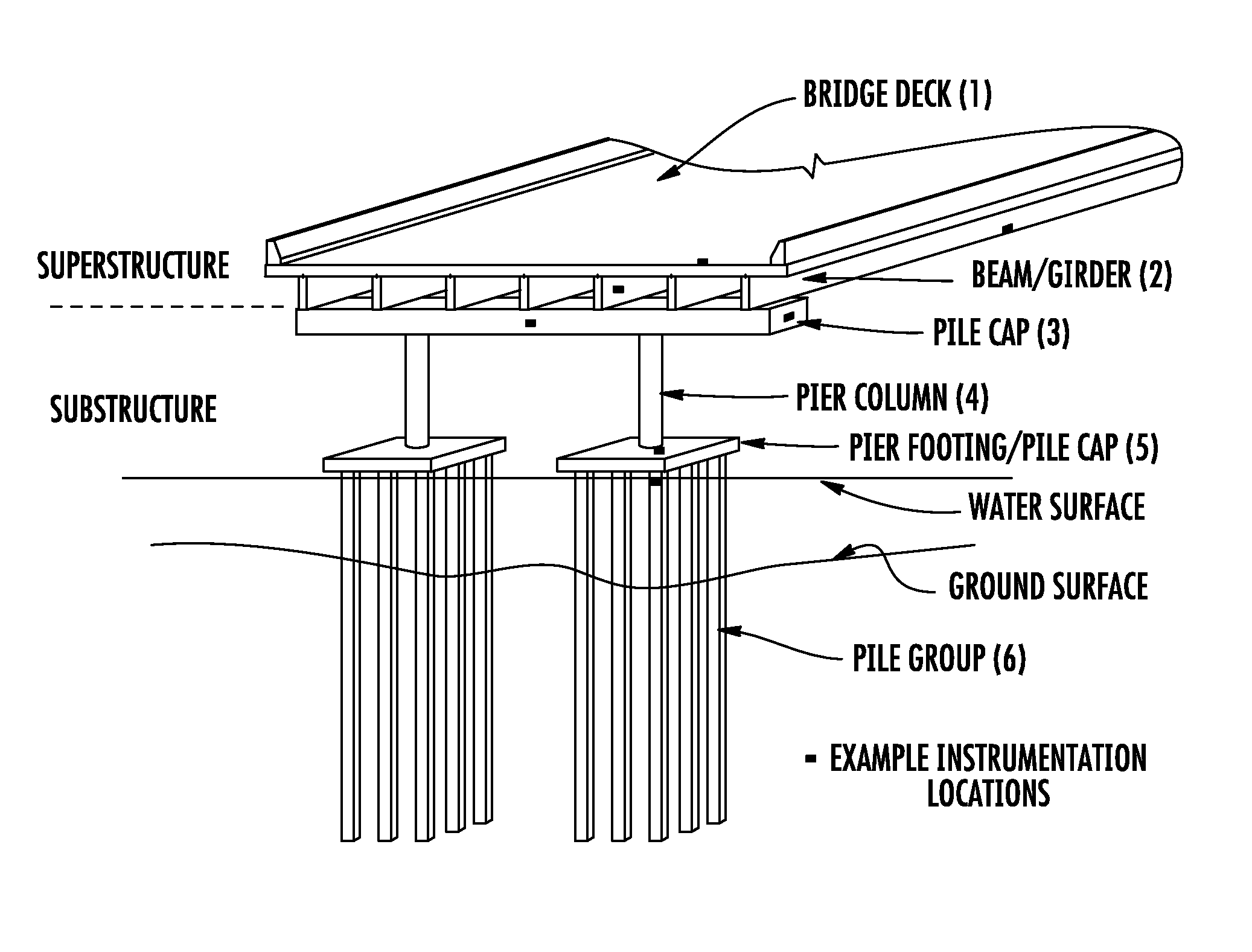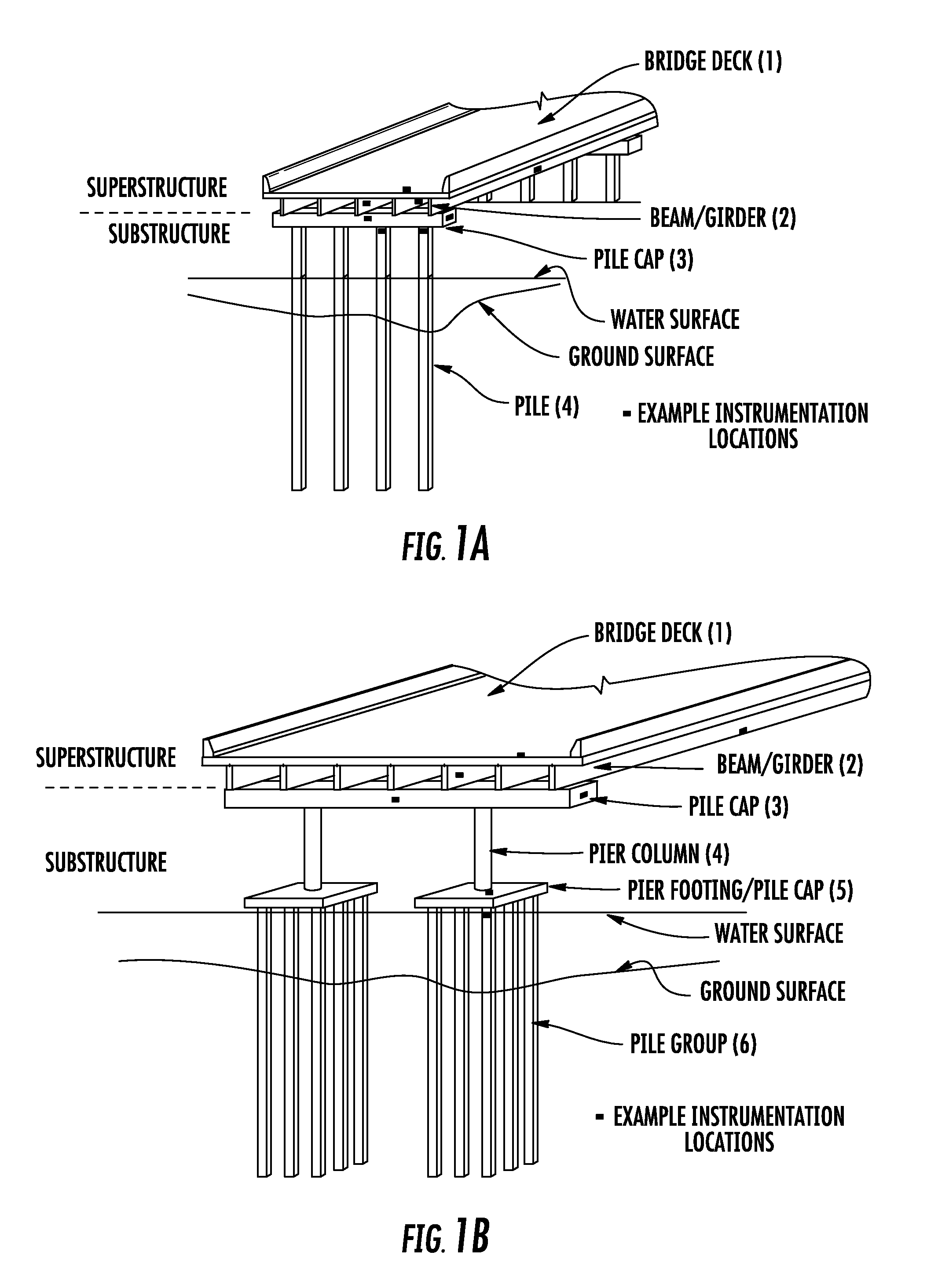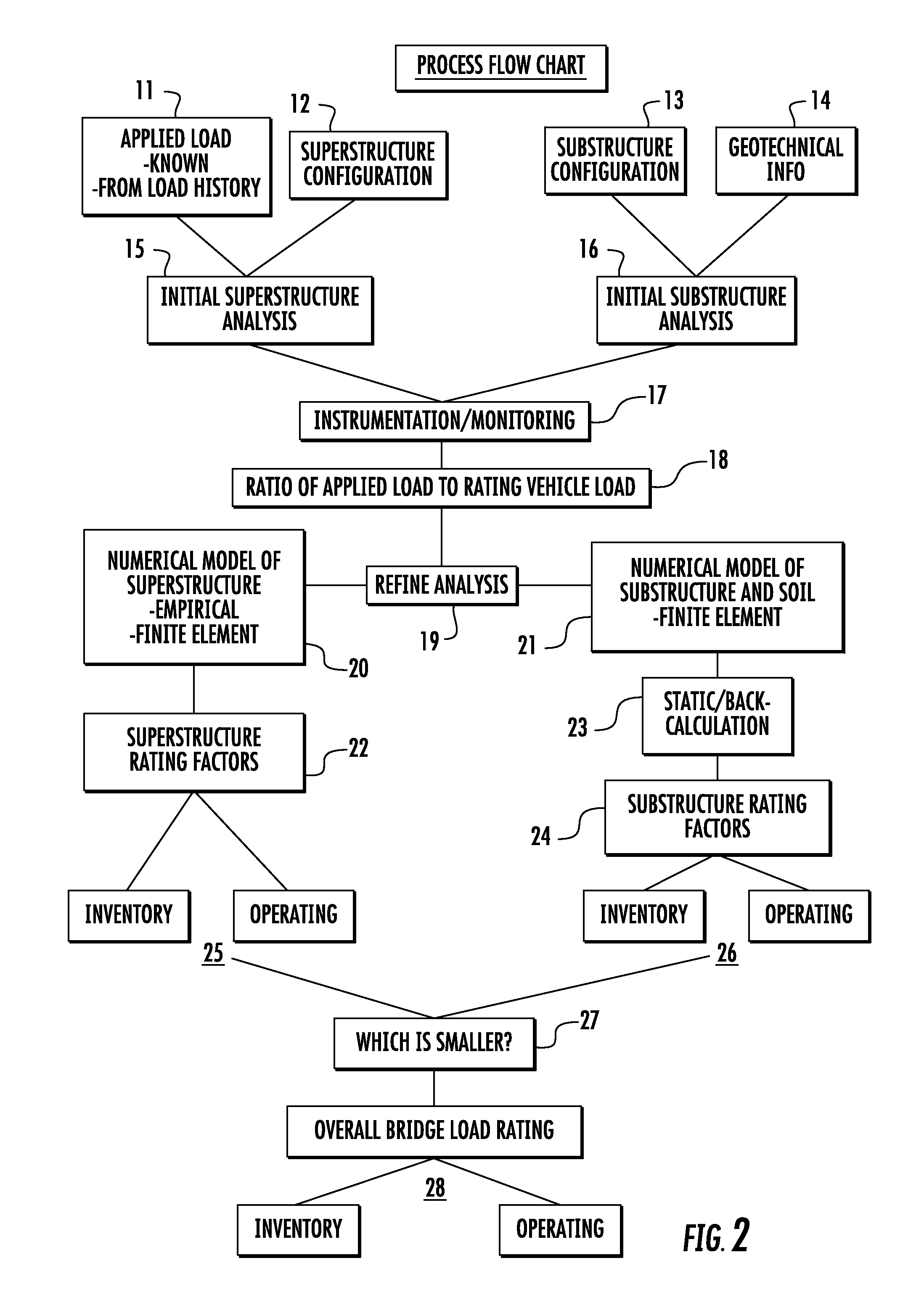Load rating of bridges, including substructure
a bridge and load rating technology, applied in the direction of elasticity measurement, structural/machine measurement, instruments, etc., can solve the problem that the process does not address the substructure load rating
- Summary
- Abstract
- Description
- Claims
- Application Information
AI Technical Summary
Benefits of technology
Problems solved by technology
Method used
Image
Examples
Embodiment Construction
[0013]FIG. 1a illustrates a typical bridge pile bent construction. The bent is supported on piles with known or unknown embedment depth. Drilled shafts may be substituted for piles. As illustrated in FIG. 1a, the superstructure generally includes the bridge deck 1 and beams / girders 2. Some structures might have a deck designed as a flat slab cast directly on the substructure. The typical substructure includes the pile (shaft) cap 3 and the piles (shafts) 4. During service, the loads are transferred from the bridge deck to the soil via the beams / girders, pile (shaft) cap, and then the piles (shafts). Therefore, the soil is ultimately carrying the bridge loads.
[0014]FIG. 1b illustrates a bridge pier construction. As illustrated in FIG. 1b, the superstructure generally includes the bridge deck 1 and beams / girders 2. The substructure includes the pier cap 3, pier columns 4, pile cap / pier footing 5, and piles 6 with known or unknown embedment depth. Drilled shafts may be used instead of ...
PUM
| Property | Measurement | Unit |
|---|---|---|
| embedment depth | aaaaa | aaaaa |
| specific resistance | aaaaa | aaaaa |
| displacement | aaaaa | aaaaa |
Abstract
Description
Claims
Application Information
 Login to View More
Login to View More - R&D
- Intellectual Property
- Life Sciences
- Materials
- Tech Scout
- Unparalleled Data Quality
- Higher Quality Content
- 60% Fewer Hallucinations
Browse by: Latest US Patents, China's latest patents, Technical Efficacy Thesaurus, Application Domain, Technology Topic, Popular Technical Reports.
© 2025 PatSnap. All rights reserved.Legal|Privacy policy|Modern Slavery Act Transparency Statement|Sitemap|About US| Contact US: help@patsnap.com



